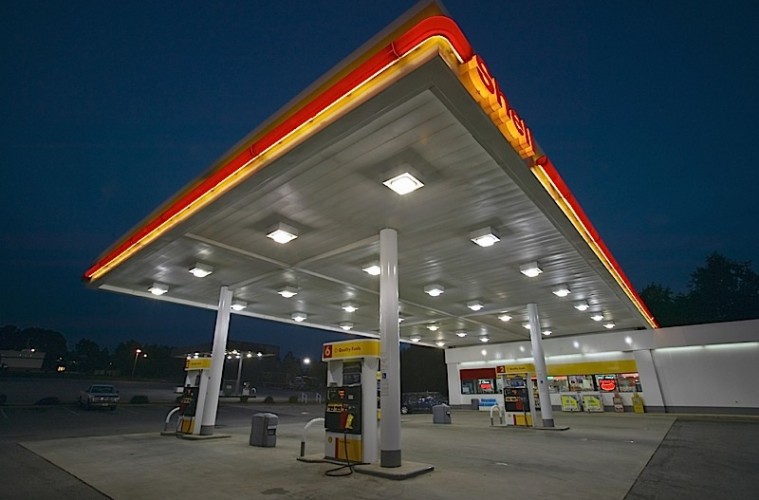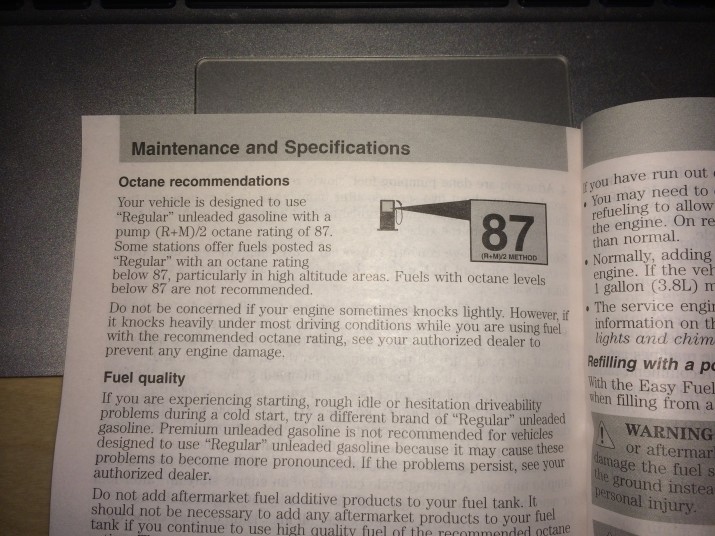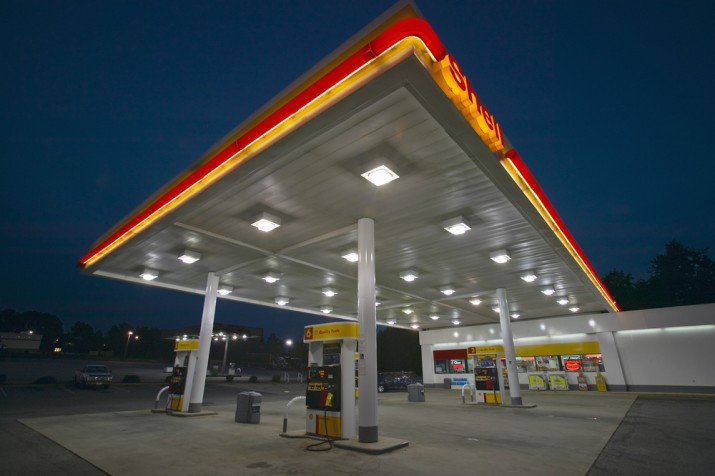Pull up at almost any gas station in the United States and you will be presented with three choices for gasoline. There will be a regular unleaded that has an octane rating of 87. There will be a mid-range version with an octane rating of 89. Finally, there will be a premium option with an octane rating of 91-94. Some people always grab the premium unleaded, while others only grab the regular. Is there a difference in what is run in a vehicle and which one should you buy? We attempt to answer those questions and more as we talk about which gasoline to run in your vehicle.
The best place to find out what type of fuel your car requires is in the owner’s manual. There will be a section towards the back that talks about fluids that the vehicle takes. One of those fluids will be gasoline, and it will give a minimum octane rating on what to run. This is the most accurate way to find out. Some vehicles will have a sticker on the fuel cap, or a display on the instrument cluster, that will say “Premium Fuel Only” if it requires premium, but that is not always a guarantee.
Octane rating helps determine how easily the gasoline will combust. Combustion is how a gasoline engine works and makes power. Every vehicle currently sold in the United States will required 87 octane. We have occasionally run across a few stations that sell 86; that is NOT recommended, even if it is less expensive. Running less than 87 octane, or the minimum octane rating of the vehicle, can cause damage to the vehicle.
For vehicles that require a minimum of 87 octane, we strongly suggest running regular unleaded all the time. The engine and onboard computer have been configured to achieve the best performance and fuel economy when there was regular unleaded in the tank. Putting in a higher octane fuel will not damage the vehicle, but the vehicle will not know how to handle the additional octane. There will be no performance boost from running premium fuel in a vehicle that only requires regular.
On the flip side, if a vehicle requires premium fuel, then put premium fuel in it. Certain turbo engines, and many high-performance engines require the extra octane to achieve peak performance. For brief periods of time, a lesser octane can be used, but the system will cut performance and not run well while doing so. Fuel economy also may suffer when running regular unleaded in a premium-only vehicle.
Some vehicles have the ability to adapt extremely-well to what fuel is in the system. If the computer senses 87 octane, the car programs itself for the best performance with that fuel. If it senses 93, it will adapt to that. In those unique situations, running the higher octane usually means more horsepower and torque.
Some people will not look at a vehicle that runs on premium fuel because of the added expense. We do not find the price difference that significant on many vehicles. If a vehicle is driven 10,000 miles per year, and achieves 20mpg, then that car uses 500 gallons per year of gasoline. Typically, the price difference between regular unleaded and premium unleaded is 20 cents. Over the course of that year, the owner of that vehicle would be paying an additional $100 in fuel over running regular unleaded. Considering that new vehicles are thousands of dollars to purchase, we do not consider the added expense that significant.
It should be noted that each situation is different, and that there may be other reasons to run different octane fuels than the ones listed here. But for the average, everyday person these are good rules to follow for the best performance, fuel economy, and long-term cost savings of their vehicle.





